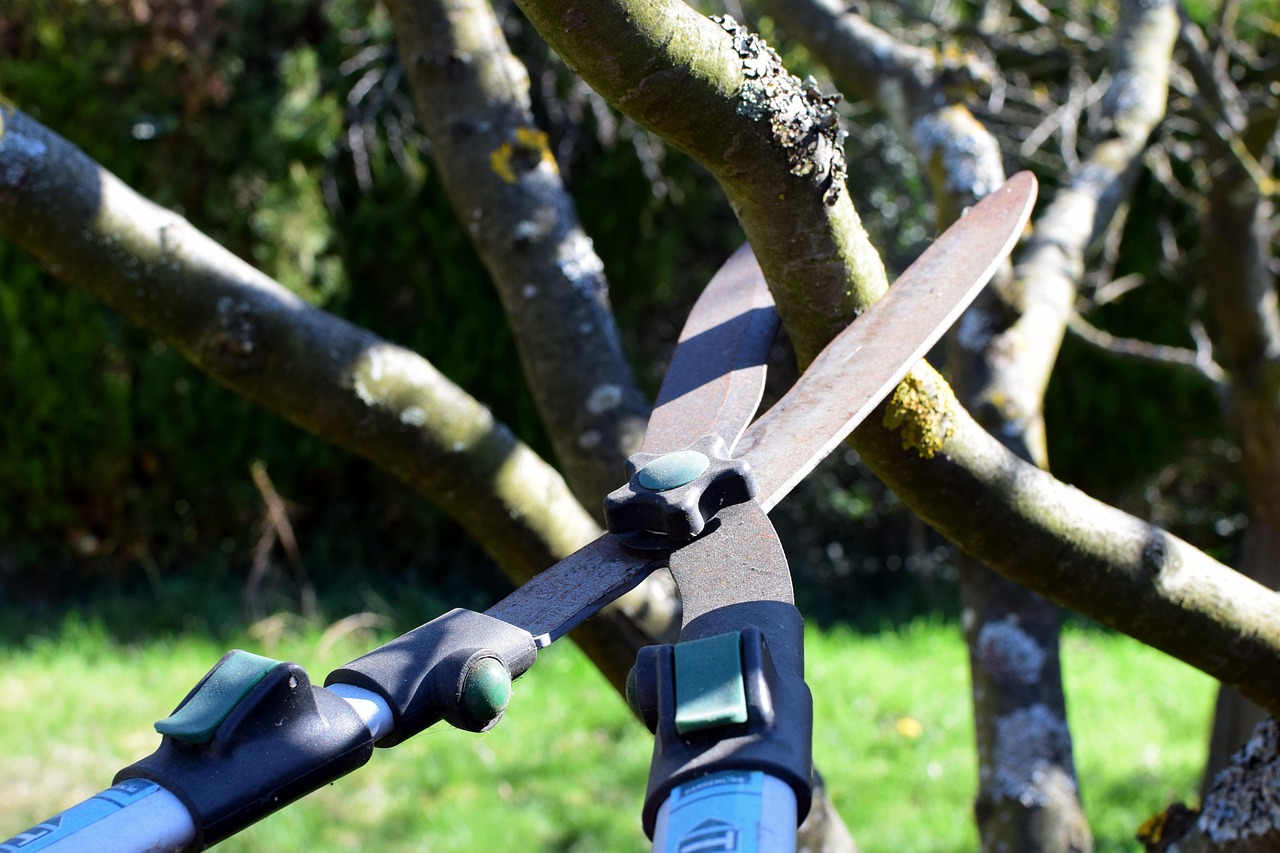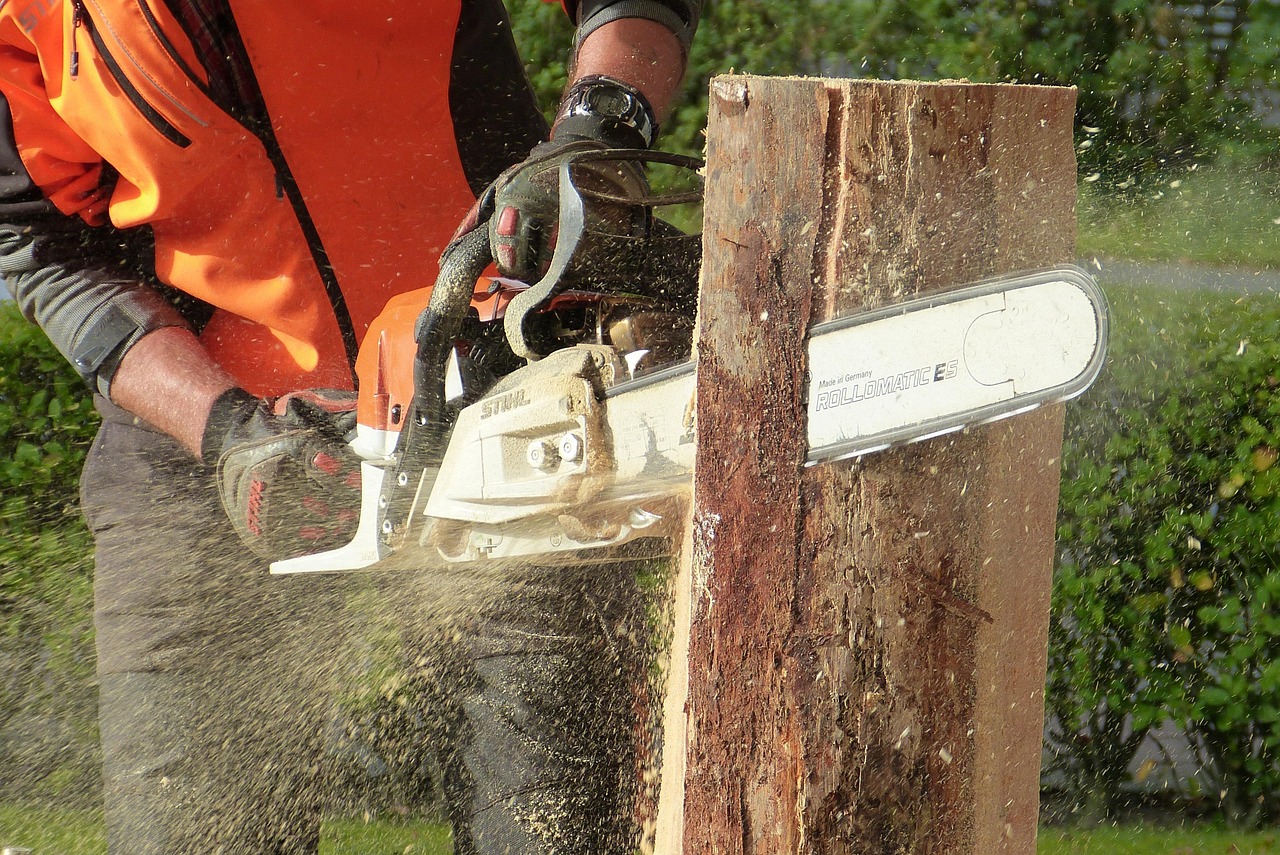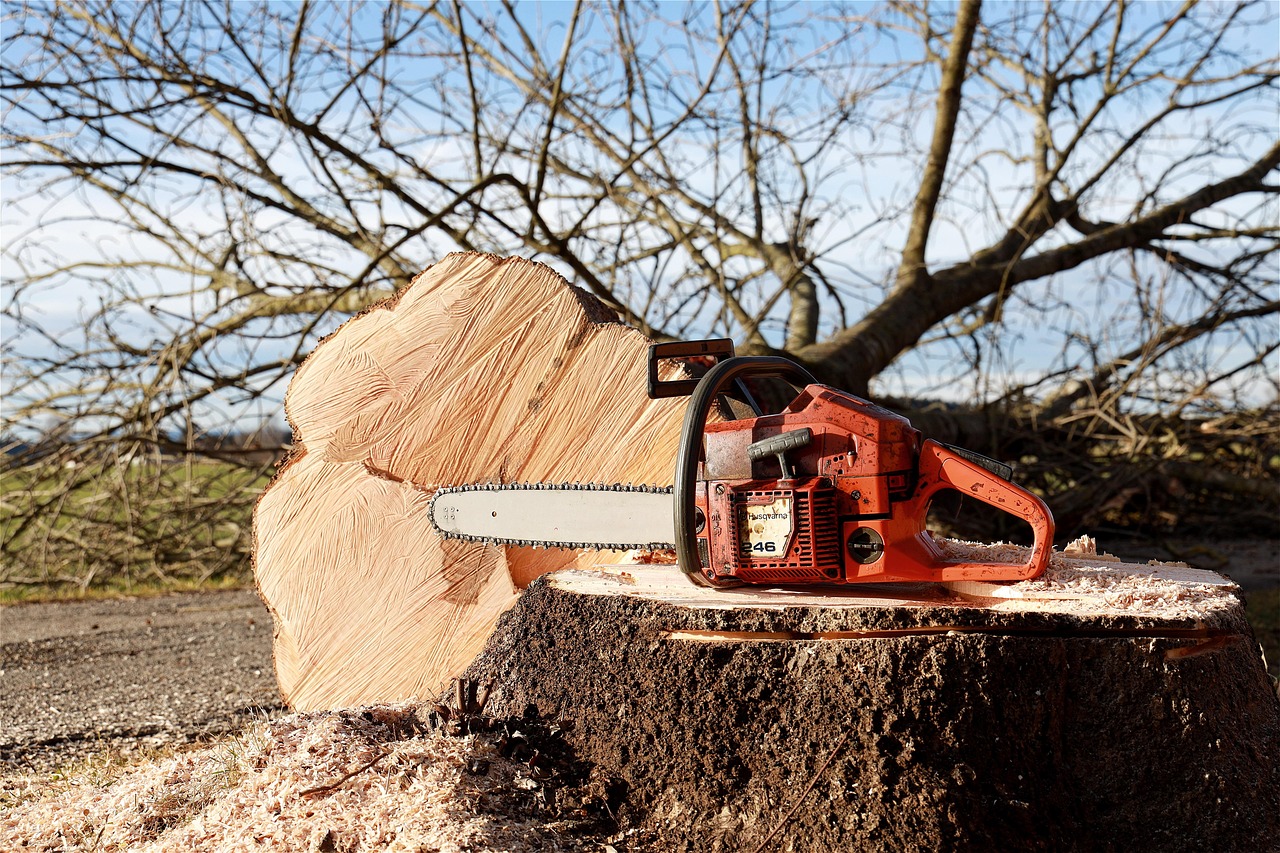Essential tools for tree pruning projects include hand pruners, loppers, pruning saws, hedge trimmers, and safety gear. These tools help maintain tree health, encourage growth, and enhance the landscape’s appearance.
Tree pruning is an essential practice for maintaining healthy trees. It involves removing specific parts of a tree, such as branches and roots, to improve its structure and growth. Pruning can promote better air circulation, allow more sunlight to reach leaves, and enhance the overall aesthetic of the landscape. Proper tools are crucial to ensure effective and safe pruning.

When planning a tree pruning project, it is vital to understand the different types of tools available. Each tool serves a specific purpose and is designed for particular tasks. Using the right tool can make a significant difference in the quality of the job and the health of the tree.
Common Tools for Tree Pruning
Several types of tools are essential for tree pruning. Below is a list of the most commonly used tools, along with their primary functions:
- Hand Pruners: Ideal for small branches up to ¾ inch in diameter. They are perfect for precision cuts on living stems.
- Loppers: Used for larger branches that are too thick for hand pruners, typically up to 2 inches in diameter. They have long handles for greater leverage.
- Pruning Saws: Designed for cutting larger branches that cannot be handled by pruners or loppers. They come in various sizes and shapes to fit different needs.
- Hedge Trimmers: Useful for shaping bushes and small trees. They can be manual or powered, depending on the size of the project.
- Safety Gear: Includes gloves, goggles, and helmets. Safety gear is essential to protect yourself while working with sharp tools.
Choosing the right tools can make the pruning process easier and more efficient. Here are more details about each tool:

Hand Pruners
Hand pruners are one of the most common tools used in tree pruning. They are lightweight and easy to handle. There are two main types of hand pruners: bypass and anvil. Bypass pruners have two blades that slide past each other, making a clean cut. Anvil pruners have one sharp blade that cuts against a flat surface, which is best for cutting dead wood.
Loppers
Loppers have long handles that provide extra leverage. This tool is perfect for reaching higher branches or cutting thicker branches without straining your back. Loppers can be telescoping, allowing you to extend their length for added reach. When choosing loppers, consider the size of the branches you will be cutting.
Pruning Saws
Pruning saws come in various designs, including curved and straight blades. Curved saws are better for making quick cuts on branches, while straight saws can provide more control for precision work. Some pruning saws are designed to be used on poles to reach higher branches without climbing.

Hedge Trimmers
Hedge trimmers are specifically designed for trimming hedges and smaller trees. They can be manual or powered, with powered models offering greater efficiency for larger jobs. When using hedge trimmers, it is essential to follow proper techniques to avoid damaging plants.
Safety Gear
Safety should always be a priority when engaging in tree pruning projects. Proper safety gear includes gloves to protect your hands from cuts and scrapes, goggles to shield your eyes from debris, and helmets to protect your head from falling branches. Wearing sturdy footwear is also important to ensure stability while working on uneven terrain.
Additional Considerations
Beyond individual tools, it’s essential to consider the context of your tree pruning project. Factors such as tree species, time of year, and growth stage all play a role in determining the best approach.

| Factor | Consideration |
|---|---|
| Tree Species | Different species have unique growth patterns and pruning requirements. |
| Time of Year | Pruning during dormancy (late winter) is often best for many trees. |
| Growth Stage | Young trees may require different techniques compared to mature trees. |
Understanding these factors will help you make informed decisions about your pruning practices. Proper timing and technique can significantly impact the health and appearance of your trees.
With the right tools and knowledge, anyone can successfully undertake tree pruning projects. Ensuring you are equipped with the best equipment will not only make your work easier but also contribute positively to the overall health of your trees.
Choosing the Right Pruning Tools
Selecting the appropriate pruning tools is crucial for effective tree care. Each tool serves a specific purpose, and using the right one can make a significant difference in the outcome of your pruning projects. This section will explore various factors to consider when choosing your tools.
Tool Quality and Durability
When investing in pruning tools, quality and durability should be at the forefront of your decision-making process. High-quality tools may cost more initially, but they typically last longer and perform better. Here are some factors to consider:
- Material: Look for tools made from high-quality steel or carbon steel, as these materials are strong and resist rust.
- Construction: Tools should be well-constructed with solid joints and comfortable grips to ensure ease of use.
- Maintenance: Choose tools that are easy to maintain. Some tools require regular sharpening and oiling to function optimally.
Ergonomics and Comfort
Pruning can be physically demanding, so choosing ergonomic tools is essential. Comfortable handles can reduce strain on your hands and wrists, especially during extended use. Consider the following:
- Handle Design: Look for tools with padded or rubberized grips that provide comfort and prevent slipping.
- Weight: Lighter tools can reduce fatigue. However, ensure they are still sturdy enough for the tasks you need.
- Adjustability: Some cutting tools come with adjustable handles, allowing you to customize their length for better leverage.
Specialized Pruning Tools
In addition to basic pruning tools, some specialized tools can aid in specific pruning tasks. Understanding these tools can enhance your pruning capabilities.
Pole Pruners
Pole pruners are designed for reaching high branches without the need for a ladder. They consist of a saw or pruner attached to a long pole. Here are key features:
- Extendable Poles: Most models allow you to extend the pole’s length for added reach.
- Cutting Mechanism: Some pole pruners have a bypass blade, while others feature a saw blade for larger branches.
- Safety Features: Look for models with safety locks to prevent accidental cuts while handling.
Chainsaws
For large-scale pruning or cutting down trees, chainsaws are invaluable. They can quickly cut through thick limbs and trunks. Here are considerations when using chainsaws:
- Type: Choose between gas-powered and electric models based on your preferences and needs.
- Safety Gear: Always wear protective gear, including chainsaw chaps, gloves, and eye protection.
- Maintenance: Regularly check and sharpen the chain for optimal performance.
Maintaining Your Pruning Tools
Caring for your pruning tools is essential for ensuring their longevity and effectiveness. Regular maintenance will keep your tools in top shape and ready for use whenever you need them.
Cleaning Your Tools
After each use, it is important to clean your pruning tools to prevent sap buildup and rust. Follow these steps:
- Remove Debris: Use a brush or cloth to wipe away dirt and sap from blades.
- Wash with Soap: Use mild soap and water to clean any stubborn residue. Rinse thoroughly.
- Dry Completely: Make sure to dry your tools completely to prevent rust.
Sharpening Blades
A sharp blade makes cleaner cuts, which promotes healthier trees. To maintain sharpness:
- Use a Sharpener: Invest in a good-quality sharpening tool specifically designed for your type of pruner or saw.
- Follow Instructions: Each tool may have specific instructions for sharpening; follow these closely for best results.
- Check Regularly: Inspect blades frequently during the pruning season to ensure they remain sharp.
Sourcing Your Tools
Finding reliable sources for purchasing pruning tools is essential. Consider the following options when looking for your tools:
- Local Garden Centers: Many local stores offer a variety of pruning tools and knowledgeable staff who can assist you in making informed choices.
- Online Retailers: Websites like Amazon provide a wide selection of tools, often with customer reviews to help guide your decision.
- Second-Hand Stores: Consider checking thrift shops or online marketplaces for gently used tools at lower prices.
Sourcing your tools from reputable suppliers ensures you receive quality equipment that can stand the test of time while enhancing your tree pruning projects.
Safety Practices for Tree Pruning
Engaging in tree pruning projects requires not only the right tools but also a strong focus on safety. Pruning can involve working at heights and using sharp instruments, making it essential to follow safety guidelines to prevent accidents and injuries. This section will delve into important safety practices to consider before and during your pruning activities.
Personal Protective Equipment (PPE)
Using personal protective equipment (PPE) is vital for ensuring your safety while pruning. Here are some essential items to consider:
- Gloves: Durable gloves protect your hands from cuts, thorns, and blisters. Look for gloves that offer a good grip.
- Safety Goggles: Protect your eyes from flying debris or branches while cutting. Goggles should fit comfortably and securely.
- Hard Hats: Wearing a hard hat is crucial when working under trees. It can protect your head from falling branches.
- Ear Protection: If using noisy power tools like chainsaws, consider wearing ear protection to prevent hearing damage.
- Sturdy Footwear: Wear closed-toe shoes or boots with good traction to prevent slips and falls while on ladders or uneven ground.
Proper Lifting Techniques
When handling heavy tools or lifting branches, using proper lifting techniques can help prevent injuries. Follow these guidelines:
- Stand Close: Position yourself close to the object you are lifting to maintain balance.
- Bend Your Knees: Always bend at your knees and use your legs to lift, rather than your back.
- Avoid Twisting: Keep your back straight and avoid twisting your body while lifting or carrying heavy items.
Tree Pruning Techniques
Understanding effective pruning techniques is crucial for maintaining tree health and aesthetics. Proper techniques promote growth and reduce the risk of disease. Below are some common pruning techniques you should be familiar with:
Thinning
Thinning involves removing selected branches to improve air circulation and light penetration. This technique can help prevent disease and encourage healthy growth. Key points include:
- Selective Branch Removal: Choose branches that are crossing, crowded, or growing inward toward the center of the tree.
- Maintain Structure: Ensure that the tree retains its natural shape while removing branches.
Heading
Heading is the technique of cutting back branches to a specific bud or lateral branch. This technique encourages bushier growth and is often used for shaping shrubs or young trees. Consider these aspects:
- Cut Above a Bud: Always make cuts just above a healthy bud to promote growth in that direction.
- Avoid Over-Heading: Excessive heading can lead to weak growth or damage to the tree.
Crown Reduction
Crown reduction involves reducing the height of the tree by cutting back the upper branches. This technique is useful for controlling tree size while maintaining its natural shape. Important tips include:
- Cutting Back to Lateral Branches: Always cut back to a lateral branch or bud instead of making random cuts.
- Aim for Balance: Ensure that the cuts are balanced throughout the crown for a uniform appearance.
Environmental Considerations
Tree pruning should also take into account environmental factors that can affect both the tree and surrounding wildlife. Here are some considerations to keep in mind:
Wildlife Protection
Many birds and other animals may nest in trees during specific seasons. Be aware of local wildlife and avoid pruning during nesting season to protect these creatures. Here are some guidelines:
- Nesting Seasons: Research local nesting times for birds and other wildlife in your area.
- Avoid Disturbances: Try to minimize disturbances near nesting areas during breeding seasons.
Tree Health
Poor timing can negatively affect tree health. Understanding when to prune is essential for promoting healthy growth. Consider the following:
- Dormancy Periods: Prune during late winter or early spring when trees are dormant for optimal recovery.
- Avoid Wet Conditions: Pruning when trees are wet can increase susceptibility to disease due to open wounds.
When to Seek Professional Help
While many pruning tasks can be handled by homeowners, certain situations may require professional assistance. Knowing when to seek help is crucial for safety and effectiveness.
- Larger Trees: If you are facing large trees that require climbing or extensive equipment, it’s best to hire a professional arborist.
- Disease Issues: If you suspect a tree has a disease that may require specialized knowledge, consult an arborist for advice.
- Complex Shapes: For intricate shaping or significant alterations, professionals have the experience needed to achieve desired results safely.
Being aware of these factors will help you approach tree pruning projects with greater confidence while ensuring the health of both you and your trees.
Advanced Pruning Techniques
In addition to the basic pruning techniques discussed earlier, there are advanced pruning methods that can be beneficial for specific situations. These techniques require a deeper understanding of tree biology and growth patterns.
Espalier Pruning
Espalier pruning involves training trees to grow flat against a wall or trellis. This technique is often used for decorative purposes or to maximize space in smaller gardens. Key points include:
- Choosing the Right Species: Apples and pears are popular choices for espalier due to their ability to tolerate this form of training.
- Planning the Design: Determine the shape and design you want to achieve before starting the pruning process.
- Regular Maintenance: Espaliered trees require consistent pruning and training to maintain their shape and encourage fruit production.
Coppicing
Coppicing is an ancient method where trees are cut back to ground level periodically to encourage new growth. This technique is often used for species like willow or hazel. Consider the following:
- Timing: Coppicing is typically done during the dormant season for optimal regrowth.
- Encouraging New Shoots: Regularly cutting back promotes the growth of multiple stems, which can be harvested for various uses.
Pollarding
Pollarding is similar to coppicing but involves cutting back the upper branches of a tree to promote a dense head of foliage. This technique is commonly used for trees in urban areas. Important considerations include:
- Frequency: Pollarding is usually done annually or biannually, depending on the species and desired growth.
- Tree Selection: Not all trees respond well to pollarding; species such as willows, limes, and planes are often preferred.
The Role of Technology in Tree Pruning
Technology has also made its way into tree care, providing tools that enhance the effectiveness and safety of pruning. Here are a few technological advancements worth noting:
Digital Arboriculture Tools
There are various apps and software available that can assist with tree care, including pruning schedules, growth tracking, and identification tools. These can help you make informed decisions about tree maintenance.
- Tree Identification Apps: These apps allow users to identify tree species easily and learn about their specific care requirements.
- Pest and Disease Diagnosis: Some apps can help diagnose tree health issues by analyzing images of leaves and trunks.
Drones for Tree Inspection
Drones are increasingly being used for inspecting large trees or forests. They can provide aerial views that help identify problematic areas that may need pruning or other interventions.
- Aerial Surveys: Drones can efficiently survey large areas, making it easier to spot issues that might not be visible from the ground.
- Monitoring Growth: Drones can also be used to monitor tree growth over time, providing valuable data for long-term care.
Sustainability in Tree Pruning
As environmental concerns grow, sustainable practices in tree pruning have become increasingly important. Here are some strategies to consider:
- Organic Methods: Use organic fertilizers and pest control methods to minimize chemical use around trees.
- Composting Pruned Materials: Instead of discarding clippings and branches, consider composting them to enrich soil.
- Diverse Planting: Prune in a way that encourages biodiversity in your garden or landscape by allowing different species to thrive.
Final Thoughts
Tree pruning is an essential part of maintaining healthy trees and enhancing the beauty of your landscape. Understanding the tools available, learning effective techniques, and prioritizing safety will empower you as you undertake your pruning projects. Incorporating advanced methods and embracing technology can further enhance your efforts while promoting sustainability in your practices.
The right approach to tree pruning not only benefits the individual trees but also contributes positively to the environment and community. Whether you are a novice or an experienced gardener, continuous learning and adaptation of new practices will lead to success in your tree care endeavors.
By being equipped with the right knowledge and tools, you can make informed decisions that will ensure your trees remain healthy, vibrant, and an integral part of your landscape for years to come.
